Study the set-up given in the diagram and answer the following questions:

Which limb of the set-up contains more concentrated solution?
tube A contains more conc. solutions.
Topper's Solved these Questions
- TRANSPORT IN PLANTS BOOK - ICSECHAPTER - TRANSPORT IN PLANTS EXERCISE - TEST YOUR PROGRESS (OBJECTIVE TYPE QUESTIONS )
86 Videos
- TRANSPORT IN PLANTS BOOK - ICSECHAPTER - TRANSPORT IN PLANTS EXERCISE - TEST YOUR PROGRESS (Fill in the blanks with appropriate words )
32 Videos
- TRANSPORT IN PLANTS BOOK - ICSECHAPTER - TRANSPORT IN PLANTS EXERCISE - REVIEW QUESTIONS (Miscellaneous questions with answers)
15 Videos
- THE LIVING WORLD BOOK - ICSECHAPTER - THE LIVING WORLD EXERCISE - Ncert Exercises (Differentiate Between )
4 Videos
Similar Questions
Study the set-up given in the diagram and answer the following questions:
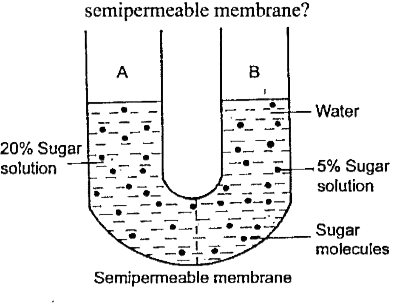
What is this process known as?
View SolutionGiven below is the diagram of an experiment just at the start. Study the diagram carefully and answer the following questions :
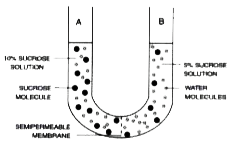
Which limb of the U-tube contains more concentrated sucrose solution - A or B ?
View SolutionStudy the set-up given in the diagram and answer the following questions:
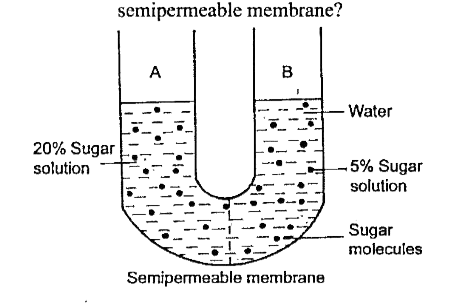
Why is the membrane called semipermeable membrane?
View SolutionStudy the experimental set-up given below and answer the following questions:
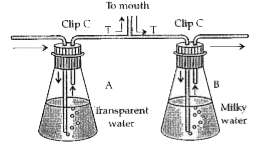
Which is the control set-up and why?
View SolutionStudy the set-up given in the diagram and answer the following questions:

What will be the level in tube A and tube B after 1 hour of set-up?
View SolutionStudy the experimental set-up given below and answer the following questions :
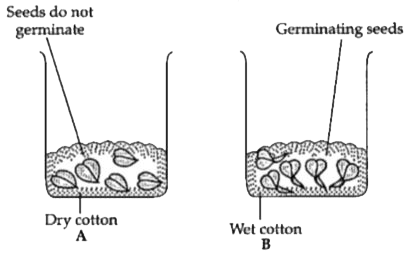
Which is the control set up and why?
View SolutionStudy the experimental set given below and answer the following questions :
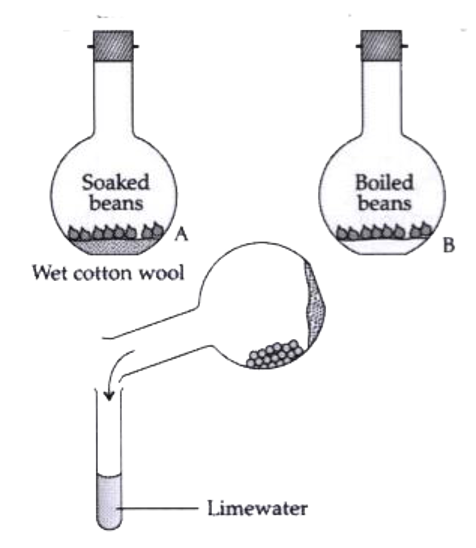
Which is the control set-up and why?
View SolutionStudy the set-up shown in the diagram and answer the following:
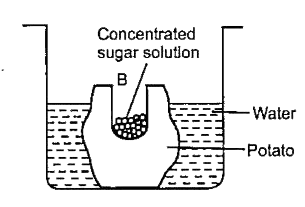
What is the technical term for this process?
View SolutionStudy the set-up shown in the diagram and answer the following:
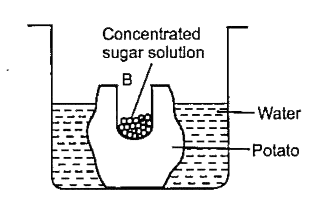
What will happen if a boiled potato is taken?
View SolutionStudy the experimental set-up given below and answer the following questions:
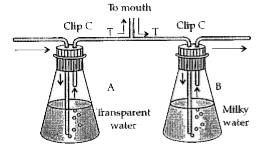
What is the aim of the experiment shown above ?
View Solution
